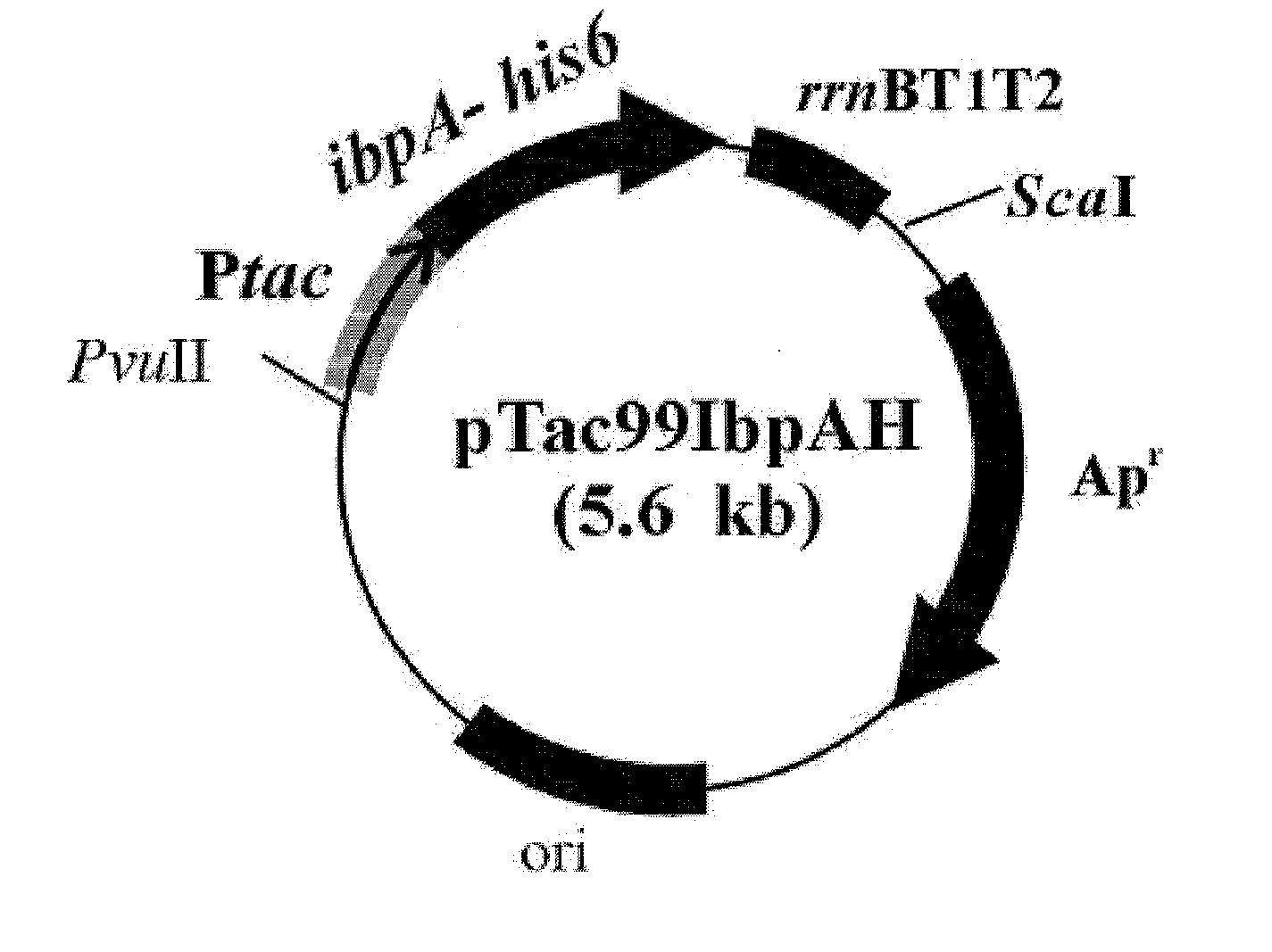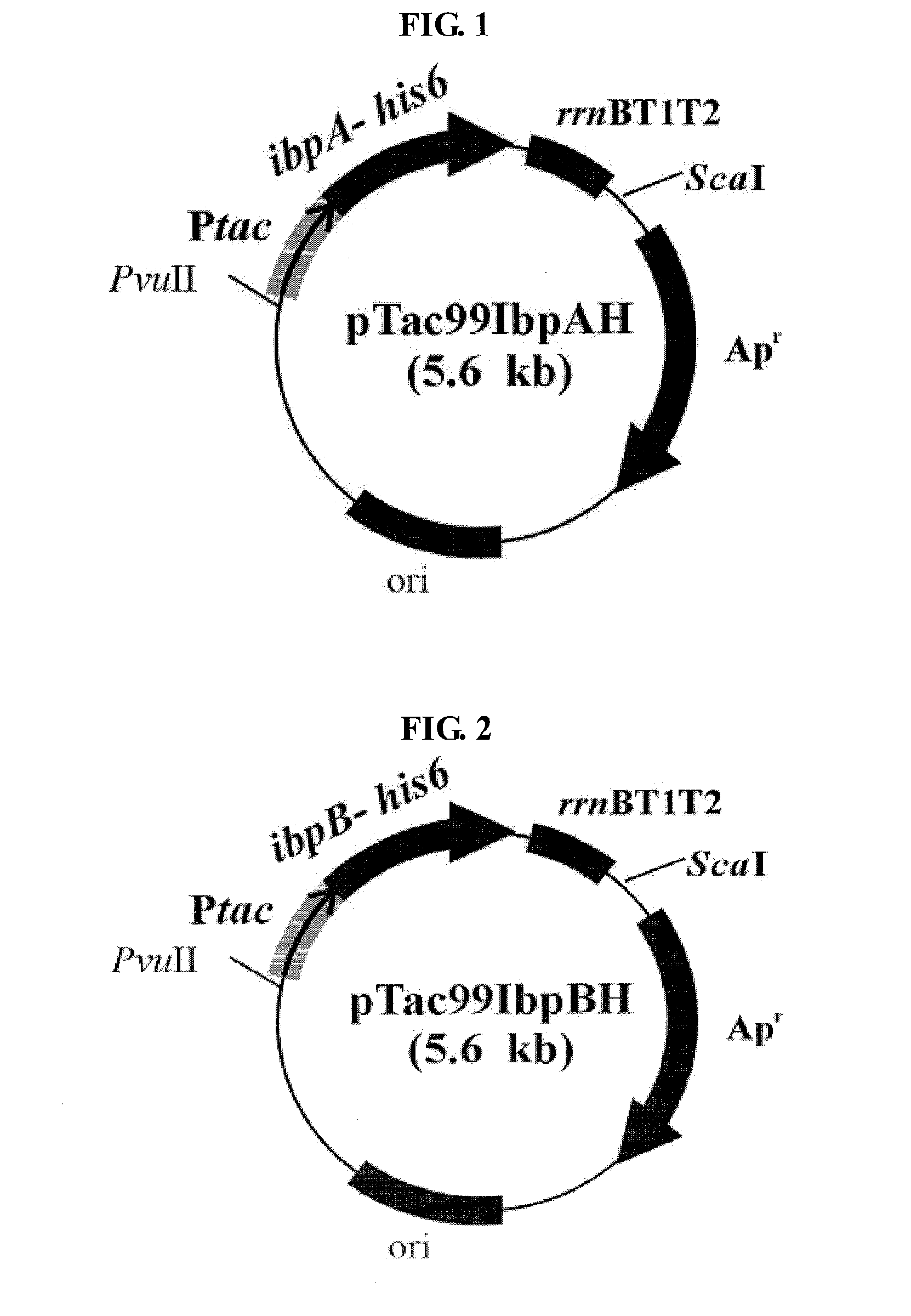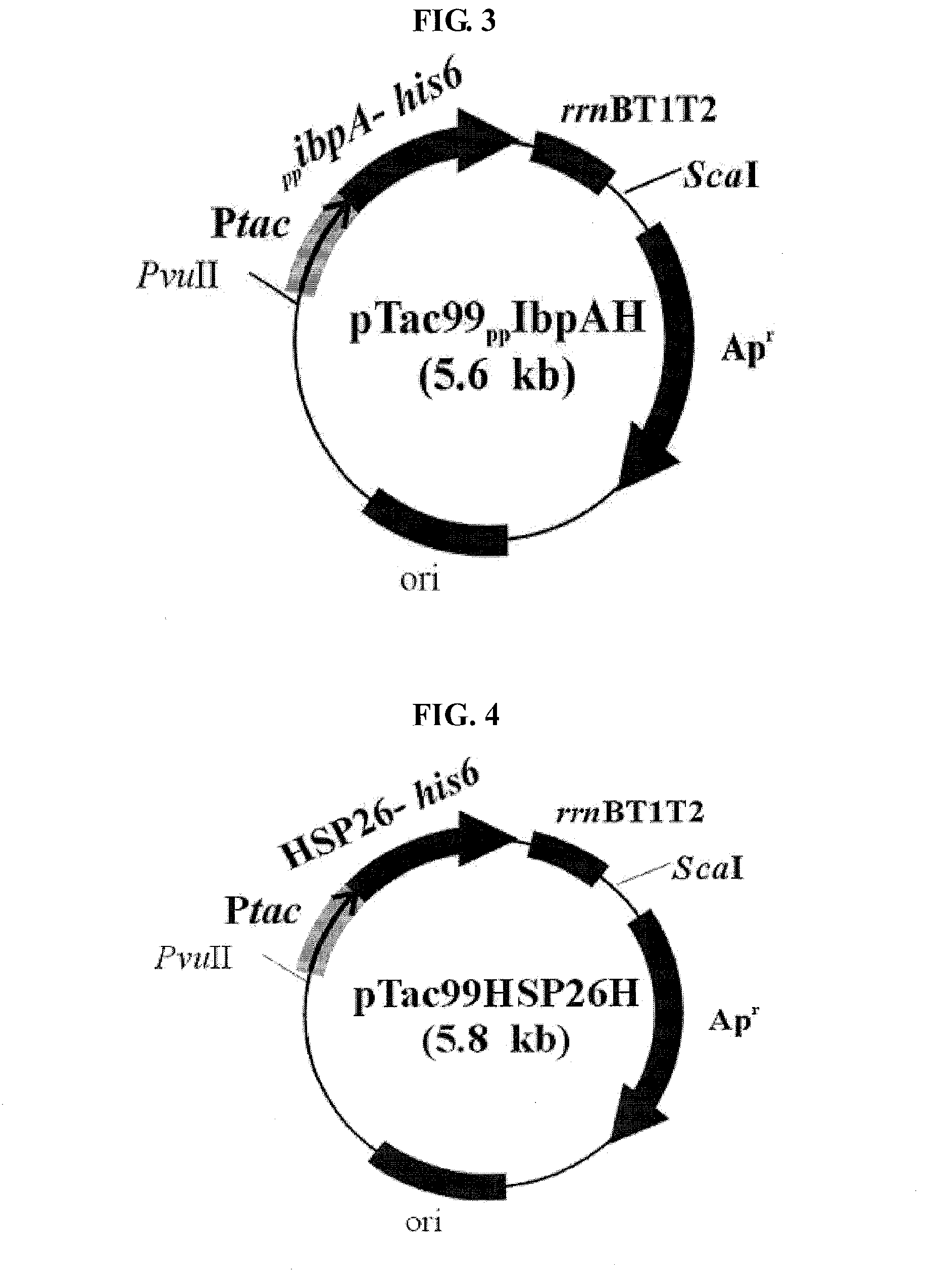Method For Preparing a Target Protein Using the Shsps
a target protein and protein technology, applied in the field of preparing a target protein, can solve the problems of reducing the final yield of proteins, affecting the efficiency of proteolysis,
- Summary
- Abstract
- Description
- Claims
- Application Information
AI Technical Summary
Benefits of technology
Problems solved by technology
Method used
Image
Examples
example 1
Preparation of Recombinant Plasmid Containing IbpA, IbpB or HSP26 Gene
[0033]Chromosomal DNAs of E. coli W3110 (ATCC 39936), Pseudomonas putida KT2440 (ATCC 47054) and Saccharomyces cerevisiae were isolated and purified according to the method of Sambrook et al. (Molecular Cloning, 2nd ed., Cold Spring Harbor Laboratory Press, NY, 1989).
[0034]E. coli W3110, Pseudomonas putida KT2440 and Saccharomyces cerevisiae were cultured in 500 mL LB (Luria-Bertani) medium for 24 hours, respectively. The strains in early exponential growth phase were collected by centrifugation, and then, suspended in 50 mL TE solution (10 mM Tris, 1 mM EDTA; pH 7.6) containing 10 mg / mL lysozyme (Sigma Co., USA). The strain suspensions were cultured at room temperature for 24 hours with slow stirring.
[0035]In order to disrupt the strains and remove proteins, the culture broth was added with 16 mL of 10% SDS (sodium dodecyl sulfate) solution and 570 μL of 20 mg / mL Proteinase K (Sigma Co., USA), followed by a react...
example 2
Purification of IbpA, IbpB and HSP26 Proteins
[0045]The recombinant E. coli XL1-Blue (Stratagene, USA) transformed with recombinant plasmids pTac99IbpAH, pTac99IbpBH, pTac99PPIbpAH and pTac99HSP26H, containing the gene encoding IbpA, IbpB or HSP26 protein prepared in the Example 1 was cultured in LB medium (yeast extract 5 g / L, tryptophan 10 g / L, NaCl 10 g / L) containing 50 mg / L ampicillin, respectively.
[0046]The expressions of IbpA, IbpB, PPIbpA and HSP26 proteins were induced by adding 1 mM IPTG (isopropyl-β-thiogalactoside) when optical density (O.D.) was 0.7 at 600 nm by spectrophotometer. 4 hours after induction, 1 mL of each culture broth was taken and centrifuged at 4° C. and 6,000 rpm for 5 minutes, and then the obtained precipitate was washed one time with 0.5 mL TE solution (10 mM Tris-HCl, 1 mM EDTA; pH 8.0) and centrifuged at 4° C. and 6,000 rpm for 5 minutes to obtain a precipitate. The precipitate was suspended in 0.2 mL equilibrium solution (8 M urea, 100 mM NaH2PO4, 10...
example 3
The Effect of sHSPs on Target Protein Degradation by Trypsin
[0050]Since target proteins are easily attacked by protease in a lysis solution of cells, the loss of target proteins is serious. In this Example, human serum albumin as a target protein was diluted in a lysis solution, and then cultured with trypsin of varied concentration as protease for 2 hours at room temperature. The concentration of protease was changed to 0, 1 / 10, 1 / 20, 1 / 30 and 1 / 50 relative to the target protein. IbpA and IbpB derived from E. coli, and HSP26 derived from Saccharomyces cerevisiae were used as sHSPs.
[0051]FIG. 6 is an electorphoretic picture showing the effect of protease inhibition by the sHSPs in a lysis solution having human serum albumin added. As shown in FIG. 6, a target protein, human serum albumin was hardly degraded in a solution with sHSPs, on the other hand, in a control, most of the human serum albumins were degraded by an attack of protease. In a comparison of lanes 2 in FIG. 6(A) to 6(D...
PUM
| Property | Measurement | Unit |
|---|---|---|
| molecular weight | aaaaa | aaaaa |
| concentration | aaaaa | aaaaa |
| optical density | aaaaa | aaaaa |
Abstract
Description
Claims
Application Information
 Login to View More
Login to View More - R&D
- Intellectual Property
- Life Sciences
- Materials
- Tech Scout
- Unparalleled Data Quality
- Higher Quality Content
- 60% Fewer Hallucinations
Browse by: Latest US Patents, China's latest patents, Technical Efficacy Thesaurus, Application Domain, Technology Topic, Popular Technical Reports.
© 2025 PatSnap. All rights reserved.Legal|Privacy policy|Modern Slavery Act Transparency Statement|Sitemap|About US| Contact US: help@patsnap.com



